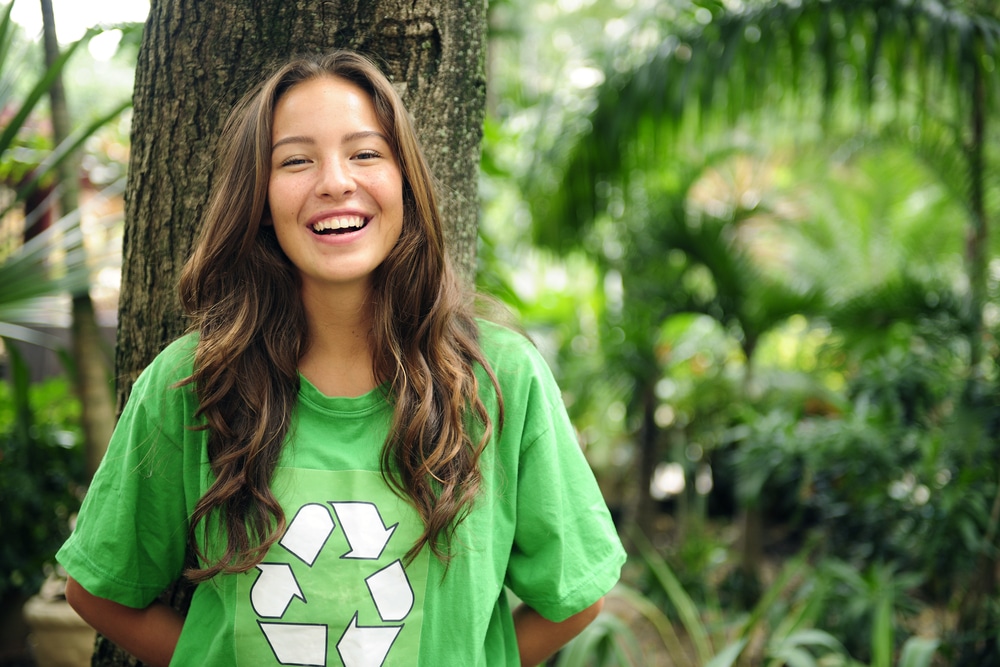President’s Environmental Youth Awards
The President’s Environmental Youth Awards (PEYA) is given to deserving K-12 students who have planned and implemented excellent environmental stewardship initiatives.
This program fosters positive community engagement and raises knowledge of the natural riches that are available to us as a country.
What is the history of PEYA?
What is the background of PEYA? Since 1971, the President of the United States has collaborated with the Environmental Protection Agency (EPA) to honor young people for their efforts to preserve the air, water, land, and ecosystem of our nation.
It is one of the most significant ways that the EPA and the Administration express their commitment to environmental stewardship programs that have been conceived and are being carried out by the youth of our nation.
Each year, the PEYA program recognizes a wide range of initiatives that have been produced by young students, school classes and clubs, youth camps, and youth groups to promote environmental awareness and action in schools and communities. These projects may be found here.
The Environmental Protection Agency (EPA) is now reviewing the work of thousands of young people from all 50 states and territories of the United States. In the past, winning initiatives have shown that they had an influence in a wide variety of spheres, including schools, communities, and subject areas.
Many of the young people and their project sponsors report that their participation in the PEYA program resulted in a significant and positive change in their lives.
How does PEYA work?
How does the President’s Environmental Youth Awards competition work? Candidates for the PEYA compete in two different award categories, namely Grades K-5 and Grades 6-12, with each category having its own unique set of assessment standards.
The Environmental Protection Agency (EPA) of the United States is split up into ten different regions around the country. According to the assessment criteria outlined in Section 6, it will be the responsibility of each regional office to choose up to one winner in each age category.
It is permissible for applicants to include children and teenagers from more than one grade level; however, the application will be classed according to the applicant who has completed the highest grade level. For instance, if one applicant group is comprised of two students in the fourth grade, one student in the third grade, and one student in the sixth grade, then the application will be reviewed according to the criteria for Grades 6-12.
A plaque with the President’s signature will be presented to the winner of each award. The EPA will provide an appreciation of the applicant’s efforts to preserve human health and the environment to the sponsors of all qualifying applicants who were not selected as winners of the grant.
How to Apply for PEYA?
How do you send an application for the President’s Environmental Youth Award? The following is a step-by-step guide outlining the application process for the President’s Environmental Youth Awards.
Step 1: Confirm Competition Eligibility
- The project is done while the applicant is in kindergarten through 12th grade.
- The applicant is a citizen of the United States or one of its territories, or he or she has been legally allowed to live there permanently. The applicant also lives in a state, territory, or tribal land in the United States.
- The project is backed by at least one adult at least 21 years old. Find out more about sponsors in the section below.
- The project commenced in the year 2022 and remained active throughout that entire year. Additionally, projects initiated before 2022 are eligible as long as they involve ongoing work during the calendar year 2022.
Step 2: How to Apply
Each person or group of people who apply for PEYA must have at least one sponsor who sends the application to the EPA and acts as the EPA’s point of contact for the application.
All application materials, including the application form, should be typed, but there are no rules about font size or spacing as long as the materials can be read.
- Download the President’s Environmental Youth Awards application form.
- CONFIRM ELIGIBILITY: The applicant’s sponsor or co-sponsor must fill out the Eligibility Self-Screen Checklist on page 6 of the application form to confirm that the applicant meets all eligibility requirements.
- COMPLETE APPLICATION FORM: The sponsor or co-sponsor of the applicant fills out the PEYA application on pages A1–A3 of the form.
- SUPPORT APPLICANTS GET INFORMATION TOGETHER: The applicant sponsor or co-sponsor helps applicants in grades 6–12 by collecting the project information that the applicants have written. The applicant sponsor or co-sponsor helps applicants in grades K–5 write and gather information about their projects. If you send in more than the number of pages listed below, they won’t be looked at. Reviewers won’t click on more than 5–6 web links per application, include links that clearly back up the project description, and/or provide extra information about how the project met the review criteria.
- PROJECT SUMMARY: The Project Summary, which can be up to 300 words long, is meant to explain the project’s purpose, goals, and results. On page A-3 of the application form, there is a place for the Project Summary.
- DETAILED PROJECT DESCRIPTION: Applicants in grades 6–12 are required to give a more detailed description of their project, and applicants in grades K–5 are encouraged to do so. This description should be organized by each of the evaluation criteria. The Project Description can’t be more than 5 pages long or have more than 5 slides.
- SUPPORTING MATERIALS: Applicants can send up to 5 extra pages of optional supporting materials, like photos, newspaper articles, or other information that gives a fuller picture of the project. Videos for the President’s Environmental Youth Awards can be sent along with the application, but applicants must include a link to where the videos can be seen online. Please DON’T send video files through email; video files sent through email won’t be looked at.
- SIGN AND DATE APPLICATION: Page A-3 of the application form needs to be signed and dated by the sponsor or co-sponsor. For mail-in applications, the sponsor’s name must be signed either electronically or with ink on paper; typing the sponsor’s name does not meet the requirements. If you need to, Pages A-3 can be sent as a separate file.
- COLLECT FORMS SIGNED BY PARENTS: The sponsor or co-sponsor gets signed permission slips and media release forms from the parent or guardian of each applicant. If the applicant is at least 18 years old at the time of submission, they should email PEYA.
- COMPLETE THE PRE-SUBMISSION CHECKLIST: In the application form, the sponsor or co-sponsor fills out the pre-submission checklist.
Step 3: Submit the Application
The applicant sponsor or co-sponsor is responsible for gathering and submitting application documents in order to preserve the online privacy of student applicants.
It is highly recommended that all application documents be sent in via electronic submission by sponsors (email). Email [email protected] if you intend to mail any part or all of the items required for your application. This will allow them to confirm that they have received the pertinent files.
Who can be a sponsor?
Who can be considered a sponsor for the PEYA application? Each candidate or group of applicants for PEYA must have at least one sponsor who is a teacher or other education professional.
This regulation can be waived for homeschooled candidates who have had no contact with official educators or youth development clubs, in which case the teacher sponsor can be a parent.
Sponsors/co-sponsors are often persons who have provided advice and help throughout the project to:
- help the student(s) come up with a well-thought-out project
- help the student(s) put the project into action, and
- help the student(s) work with other groups and people in the community(ies).
In the case of applicants in grades K–5, sponsors and co-sponsors often also fill out the application form and provide a hand in composing a thorough description of the project as well as any material in support of it.
Please contact [email protected] with any questions you may have regarding the function of a sponsor.
Can a team consist of students from multiple schools?
Can a team be made up of students from different schools upon joining the President’s Environmental Youth Awards? Students attending a variety of schools can get together to form a team.
Nevertheless, one school and one teacher or another sponsor from that school should act as the “lead” school for the application; alternatively, the major sponsor might be an informal educator such as a scout leader.
Is there a team size limit?
Is there a maximum member count for a team participating in the President’s Environmental Youth Awards? There is no predetermined cap on the size of a squad. Because all candidates who are under the age of 18 at the time of application need to have two documents signed by a parent or guardian, we strongly advise that careful attention be given to the work required to gather and submit these papers.
Large teams have the option of listing as applicants the student(s) who took the lead on the project; if their team is chosen as the winner, other students will be asked to join them as their guests.
Who are some of the past PEYA winners?
Who are some of the people who have won the President’s Environmental Youth Awards in the past? To encourage youth participation in environmental care and preservation, PEYA bestows annual awards on a wide range of community initiatives that have been established by students, school classes, individuals who have attended summer camps, and members of youth groups.
Rahul Ram
Award Category: Grade Level K-5
Massachusetts
Rahul, a 5th grader at Day Elementary School in Westford, Massachusetts, volunteered at his community garden and saw that growing food takes a lot of work. As his parents drove him to and from the garden, he thought about how much pollution their car and all the other cars going to and from the garden every day were causing.
Rahul’s research led him to believe that all the cars that drove to the garden to take care of individual garden plots used a lot more gas than a single farmer’s tractor would on a plot of land the same size. Rahul wanted to clean up the air in his neighborhood, so he tried to get his fellow gardeners to water several other plots when they drove to water their own.
To help with this, he made a website where people could sign up to water each other’s gardens. Rahul knew that the project would only work with the help of the community volunteers, so he shared this website with other gardeners through flyers and signs at the garden. Rahul’s garden community has already cut about 2,500 pounds of pollution from the air, and he hopes they will cut even more next season.
Rahul also made the observation that a garden takes a significant amount of water to maintain. He did some “number crunching” and determined that his garden needs the equivalent of 66 swimming pools of water throughout the growing season from May through October.
The cultivation of plants using nutrient-rich water rather than soil was introduced to Rahul, who gained an understanding of hydroponics in the process.
He advocated including a hydroponics area in the community garden as a means of educating the community about the water conservation benefits of hydroponics and encouraging a broader adoption of hydroponics in the local garden.
Rahul has also shared his expertise with other children at his school, with the assistance of his instructors, in an effort to encourage other students to become environmental problem-solvers in their communities.
Sunrise Bergen County
By: Leaders of Sunrise Bergen
Team Members: Eesha Bhatia, Julianne Chase, Anika Dhulipala, Pranav Hooda, Elena Jacoby, Andrea Kim, Kaleigh Krause, Sasha Lee, Kaylee Nam, Samiya Pathak, Pooja Rayapaneni, Jisae Son, Eva Taveras, and Meghana Veldhuis
Award Category: Grade Level 6-12
New Jersey
Here’s another recipient of the President’s Environmental Youth Awards that we want to share. Concerned about the effects that climate change will have on the communities in which they live, a group of high school students in Bergen County, New Jersey, set out to provide their fellow classmates with chances to engage in community service.
They established Sunrise Bergen County, which is currently directed by fourteen students currently enrolled in grades 10 through 12 of the local high school system. These students foster this entirely student-run initiative to aid the environment and improve environmental education in the local schools.
Through education and active action, Sunrise Bergen County promotes environmental sustainability. Participants, for example, planned an Earth Week 2021 Climate Summit that featured informed neighborhood environmental experts and benefitted kids throughout Bergen County.
Members also arranged the first annual Climate Summit at a local school, which featured 40 speakers on topics such as science, activism, urban planning, renewable energy, and other environmental stewardship.
The organization also held programs for younger children at parks and libraries, where they employed age-appropriate storytelling and arts and crafts as environmental education teaching methods. Members also developed climate art exhibitions in local parks, showcasing local artists who helped raise awareness about the effects of climate change.
Sunrise Bergen County has also organized local park and river cleanups, including a March Madness cleaning event sponsored by social media.
Sunrise Bergen County uses a number of teams with diverse emphasis areas to create opportunities for student members to use their abilities and interests to improve the environment via action planning, creativity, community-building, and more. Even during the pandemic, the organization uses techniques like social media and virtual gatherings to expand its influence.
Sunrise Bergen County’s present leaders will pass on leadership to younger high school students upon graduation, creating a legacy of environmental stewardship and offering future students the chance to obtain experience, knowledge, and leadership abilities.
AdmissionSight is willing to help
Throughout the school year, students, classrooms, clubs, camps, and youth groups all around the country work hard to raise environmental consciousness and take positive action through the President’s Environmental Youth Awards initiative, which recognizes and rewards the best of these efforts each year.
While on the topic of being well-informed and conscious, you should seek the guidance of professionals who work in the subject of college admissions.
We at AdmissionSight would be happy to assist you in realizing your goal. AdmissionSight has become the most trusted name in the field of college admissions advice as a result of its more than a decade of expertise assisting students just like you in gaining admission to the colleges of their first and second preferences.
Please get in touch with us as soon as you can so that we can schedule an initial consultation that will be provided free of charge.








































